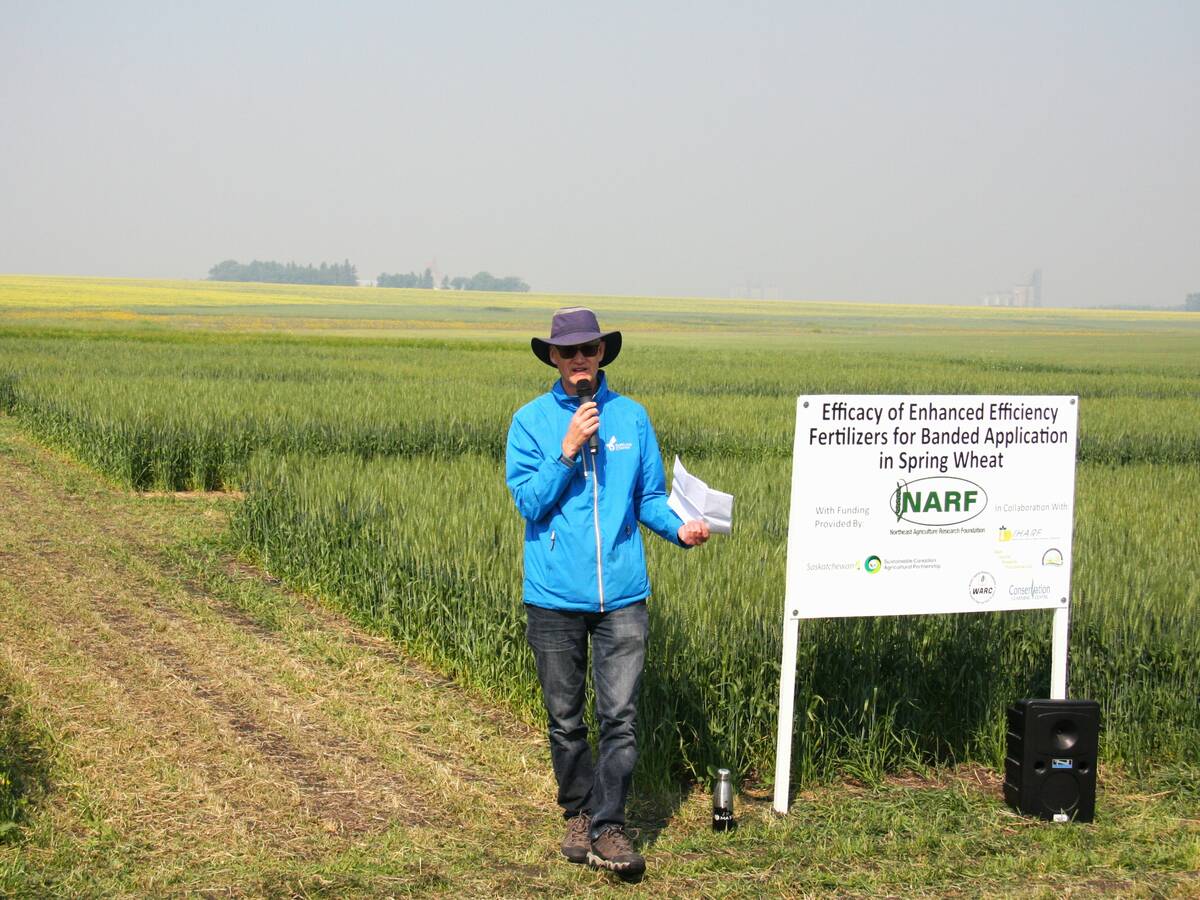Stationary power take-off tests are scientific, concedes Agco’s marketing manager for high horsepower wheeled tractors.
However, Jason Hoult said the company feels horsepower hour per gallon is more important because it measures something that a p.t.o. test can’t measure.
“One gallon of fuel makes a certain horsepower for one hour,” he said.
“That’s what horsepower hour per gallon shows. For tractors, it’s the closest thing we have for a miles per gallon comparison.”
Read Also

Fertilizer method’s link to emissions studied
A researcher says others studying greenhouse gas emissions aren’t considering how the loss of nitrogen into the atmosphere correlates with fertilizer application or if there is an impact to yield.
Agco’s test preferences are part of an ongoing debate over how it and John Deere have interpreted test results from the Nebraska Tractor Test Lab.
Hoult said Agco’s four new tractors in its high horsepower mid-sized lineup rated best in 27 of the 28 tests at the Nebraska lab, competing against John Deere, Case and New Holland. The four categories are 200, 225, 250 and 275 p.t.o. h.p.
“The Deere response to this has been to give only two actual test numbers for their tractors, but Neb-raska does seven p.t.o. tests at different power levels,” he said.
“They’re saying, ‘Mr. Farmer, yes, all those other tests are there, but these two tests that we won are the most important for you to look at.’
“Deere had the other comment that you don’t always run these tractors wide open, which we acknowledge, but Deere picked 75 percent power simply because that’s the range they want farmers to see.”
Hoult said Agco quoted maximum power because that’s when an engine is fully loaded and won’t make any more power.
He said Case, Deere and Agco have built-in performance software that allows the engine to automatically finds its own sweet spot where it produces the most power for the job at hand while delivering the best fuel economy.
“Of all the tests, max power is where you’re going to be the most fuel efficient because that’s where you’re making the most power possible,” Hoult said.
“You’ve slowed the engine down, so you’ve removed some of the parasitics. Deere made it (max power) at 1,650 r.p.m. We made it at 1,850 r.p.m. At max power, that’s where we far exceeded everybody else.”
He said Agco also takes exception to the drawbar information published by John Deere.
The correct protocol for a drawbar test is to conduct it both ballasted and nonballasted, he said. All tractor manufacturers agree that a tractor should be weighted between 100 and 135 pounds per h.p. for an honest reading, he added.
“Their 8320R was only tested unballasted. That’s only 92 lb. per h.p. And they ran it down at 1,300 r.p.m.
“We ran our tractors at a realistic 1,700 r.p.m., both ballasted and unballasted. Deere tells farmers to ballast their tractors for best performance, yet they’re quoting an unballasted drawbar test and telling farmers it’s the most important comparison to look at.”
Hoult said Agco’s selective catalytic reduction engines use diesel exhaust fluid (DEF) or urea to meet exhaust emission criteria. It constitutes three percent of the liquid going into the induction system.
“Deere has changed the horsepower hour per gallon calculations they’re sending out to their dealer network. They’ve added DEF into the fuel volume. DEF is not a fuel. It’s not added to create power. It’s a secondary fluid that’s added to clean the exhaust to meet Tier III standards.
For more information, contact Jason Hoult at 877-525-4384 or e-mail agcoanswers@agcocorp.com.

















